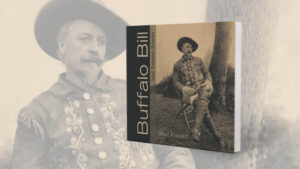Students snag chance to probe ‘Camp Misery’
As if the indignity of losing at Fredericksburg were not enough, 100,000 Union soldiers (and 90,000 of their counterparts from the South) settled in to spend the winter along the banks of Virginia’s Rappahannock River at a site that would become known tellingly as Camp Misery. The savage winter of 1862 was about as brutal and deadly as the battlefields—perhaps more so. According to the Virginia Department of Historical Resources, “Pneumonia, cholera, smallpox, dysentery, malaria and other diseases spurred by close contact, poor nutrition, and inadequate clothing and housing joined to ravage the camps.”
Construction of a new high school will destroy any remaining clues about life in Camp Misery, but first, DHR, the Archeological Society of Virginia, students and researchers from James Madison University, and the Stafford County School System combined forces to excavate a “street” in the old Union camp last fall. Artifacts discovered were sent to JMU for processing and interpretation.
“We’re going to find out some significant information,” said Clarence Geier, professor of anthropology at James Madison University. Geier said he expects a report to be written in the coming year.
According to DHS, “What was an army of 100,000 men became a vast temporary Union ‘city’ in which the Corps, Divisions, Companies and Regiments were the spatially arrayed political subdivisions. The name ‘Camp Misery,’ given by some of its occupants, evokes a soldier’s life of cold temperatures, snow, freezing rain and sleet, and lots of mud. Companies of men were aligned in communities with ‘streets’ made up of crude huts arranged in rows. For the common soldier life was unpleasant and held the prospect of sharing a partially below ground structure—of a size smaller than many of today’s walk-in closets—with four people in fair weather and foul, in sickness and in health, and for a duration lasting weeks and months.”




